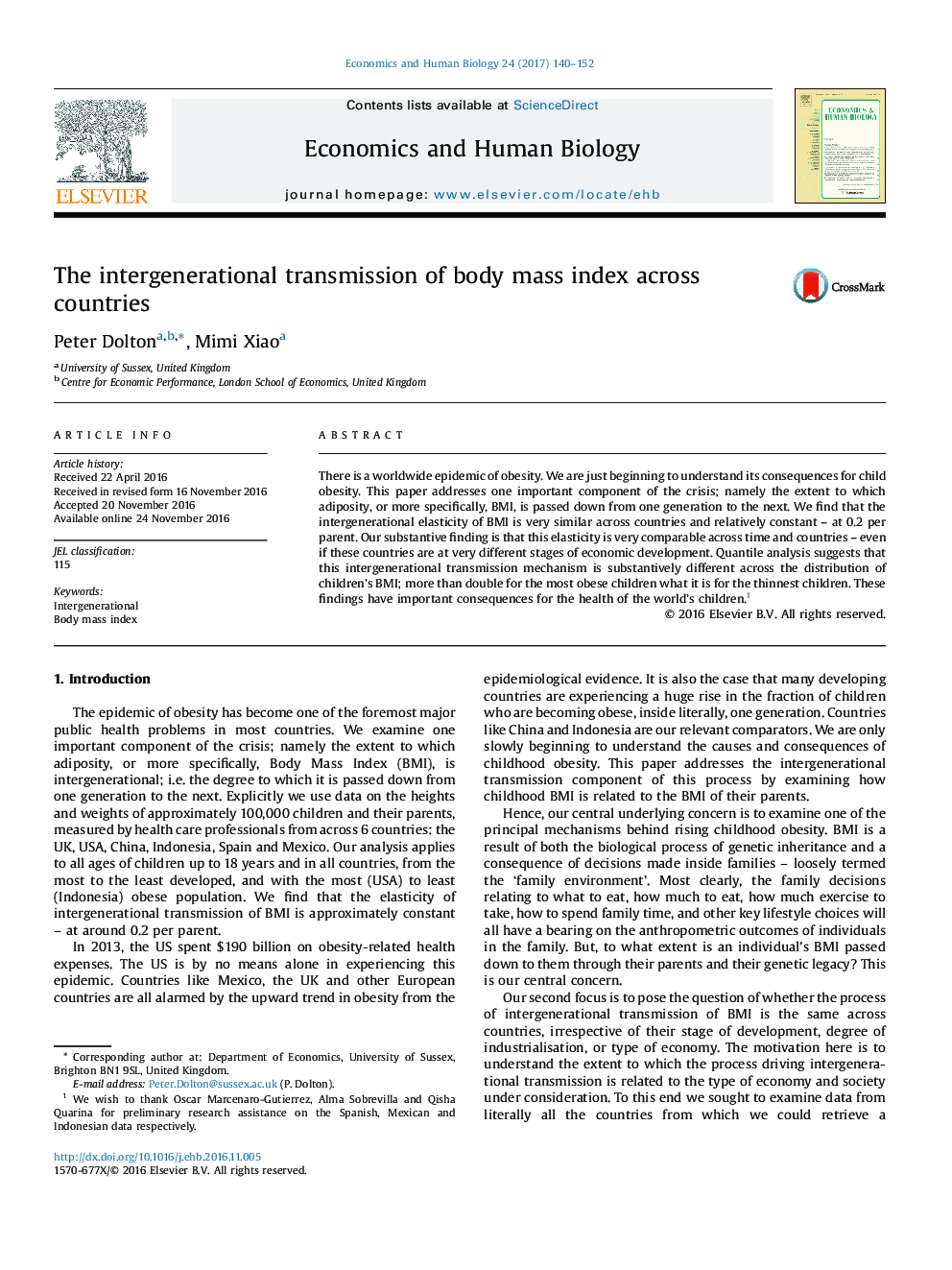| Article ID | Journal | Published Year | Pages | File Type |
|---|---|---|---|---|
| 5056795 | Economics & Human Biology | 2017 | 13 Pages |
â¢We examine the intergenerational transmission of BMI between children and their parents in six countries.â¢We estimate that the intergenerational BMI elasticity to be around 0.2 per parent.â¢This elasticity is approximately the same across developed and developing countries.â¢We find this correlation more than double for the children with the highest BMI compared to those with the lowest.
There is a worldwide epidemic of obesity. We are just beginning to understand its consequences for child obesity. This paper addresses one important component of the crisis; namely the extent to which adiposity, or more specifically, BMI, is passed down from one generation to the next. We find that the intergenerational elasticity of BMI is very similar across countries and relatively constant - at 0.2 per parent. Our substantive finding is that this elasticity is very comparable across time and countries - even if these countries are at very different stages of economic development. Quantile analysis suggests that this intergenerational transmission mechanism is substantively different across the distribution of children's BMI; more than double for the most obese children what it is for the thinnest children. These findings have important consequences for the health of the world's children.1
